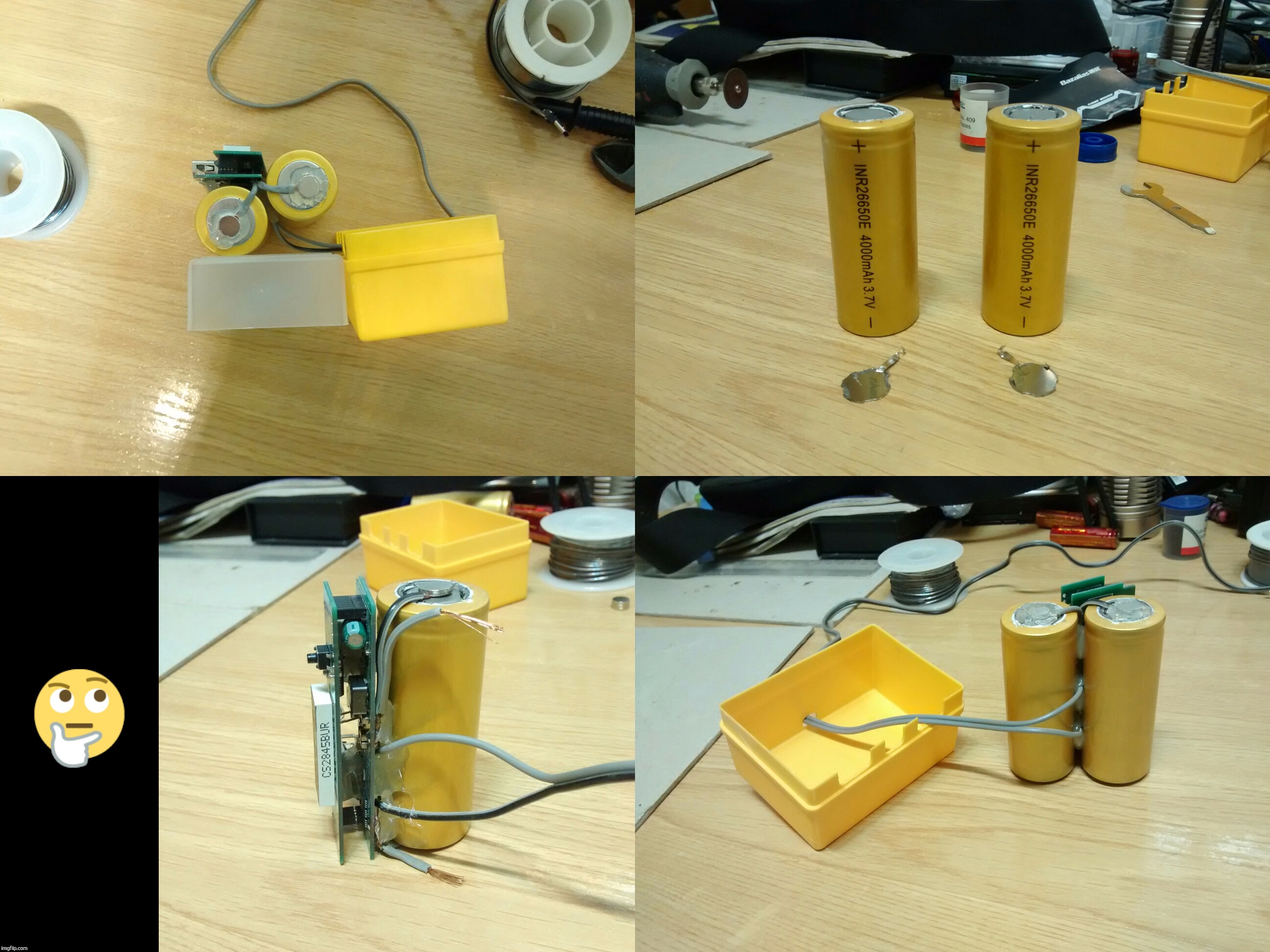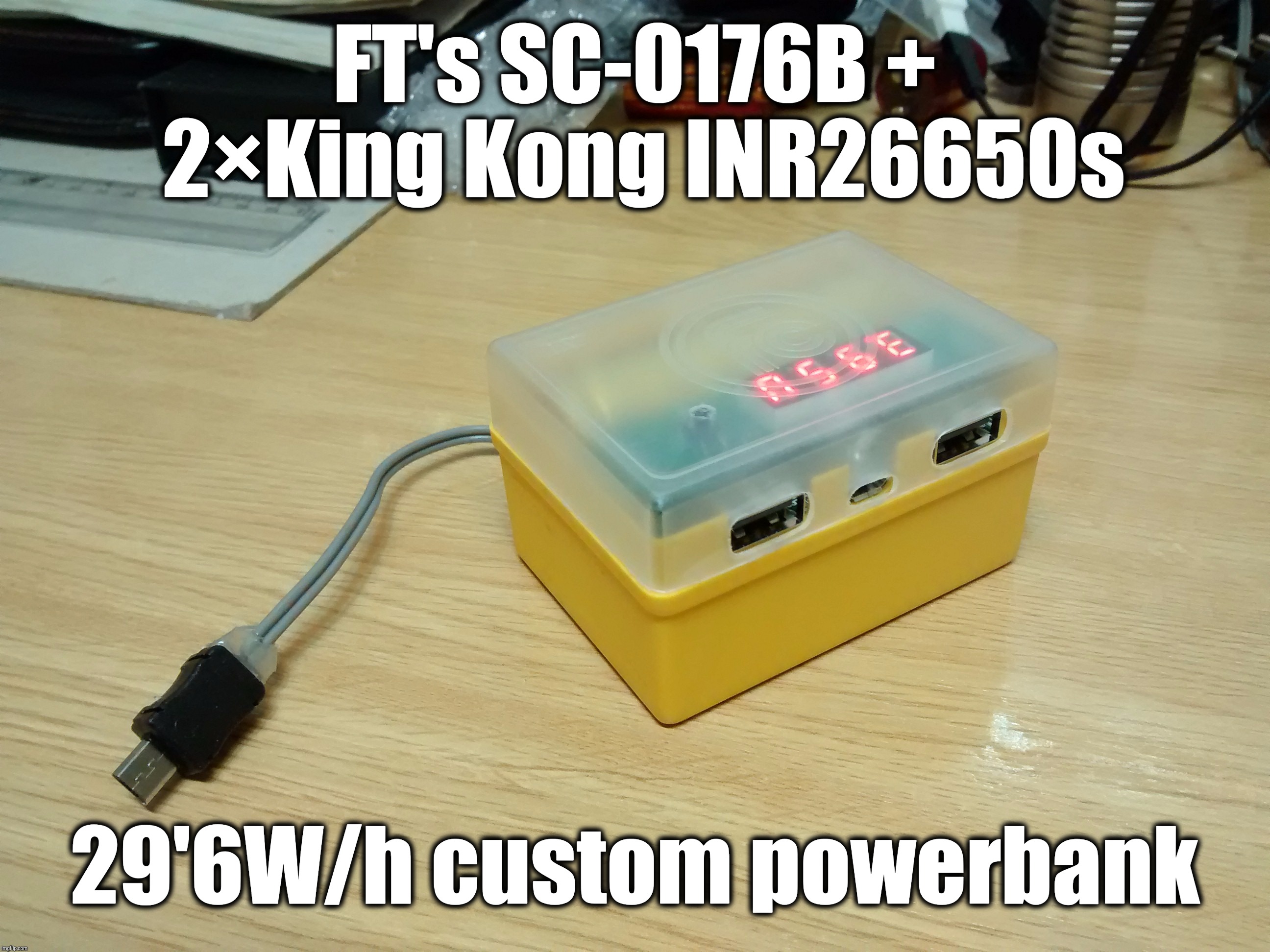Hi, Bakuti!
You know, you’re right. I actually put a 2 amp load on one identical to pictured above, and it did shut down… some kind of protection circuit is already in there. Do I trust it entirely? No, not really. Moreover, do I trust neophytes with unprotected cells (such as putting them in a pocket, purse, or luggage with keys, change, or other metal objects)? No!
My idea was:
My policy is, when I give a flashlight to a non-flashaholic, the battery is always protected. I don’t trust the users, nor the cheap chargers I give them (which I’ve sometimes seen charge cells too high, or never terminate). What’s worse is, I use such cheap chargers myself, and noticed they can work fine for a few years, then go bad. I just don’t want to be the cause of something bad happening, such as a fire, or even the cell being killed by a charger. Usually, they don’t use their flashlights, and would probably find these cheap little power banks quite handy, maybe even more handy than the light.
What I’d like to do is, for them to be able to use the one Protected cell I gave them, for both devices. I know it seems like I’m a cheap bastard, but all these ‘cheap’ pieces (charger, flashlight, protected cell) add up for multiple people.
If the protected 18650 would fit in the Power Bank, it would prevent me from buying an extra unprotected cell just for use for the power bank. Also, some applications need button top, and protected cells are always button top. Plus, neophytes understand the polarity of button-tops better.
I just bought a bunch of protected, button-top NCR18650B’s from Gearbest (amazing deals on ncr18650b’s, by the way). I am looking into circumcising some of the protected cells (I’m against genital cutting, but not against battery cutting), and I also realized that the NCR (nickel cobalt) should actually be a safer chemistry, so maybe protection isn’t 100% necessary, I’d just prefer to have it there for gifting, most especially to prevent short circuits. Most people should not be handling 18650 cells as if they were AA alkalines, but the protection circuit, quality cell, safer chemistry (and some education) can all help.




